India has 14 major river systems spanning 400 rivers. While the United States has 18 major river basins and Russia has over 20, India’s rivers spreading from north to south and east to west (as depicted in the map below) demonstrate why the subcontinent became an agrarian civilization. These waterways not only enable irrigation through canals but also deposit mineral-rich sediments that create fertile soil.
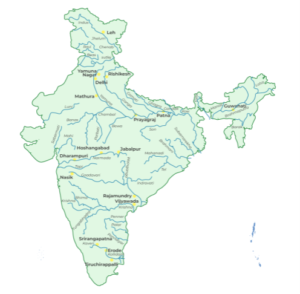
If you were to ask someone from 50 years ago to trace the path of the Ganga or the Yamuna, they would follow roughly the same exact route as depicted above given the relatively stable course that these rivers follow. However not all rivers have straightforward paths, case in point – Kosi.
The Kosi River system, stretching 720km as the Ganga’s third-largest tributary after Ghaghara and Yamuna, flows across Bihar, Nepal, and Tibet. Known as “the Sorrow of Bihar,” the river is notorious for its unpredictable course changes caused by one of the world’s largest alluvial cone deposits (180km long, 150km wide) that obstruct its flow, causing frequent course changes.
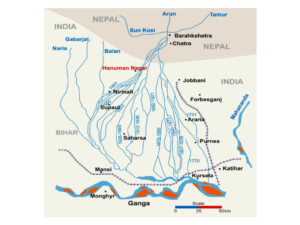
Inset: The Kosi River’s Course over the Years
Going with the Flow: Why Path Matters
A river’s journey begins in the source zone, where glacial melt, rain, and snow feed into mountain streams that cascade down snow-capped peaks (e.g. the Amazon starts as mountain runoff in Peru before becoming the world’s largest river system), gradually converging as they flow through the transition zone toward their ultimate destination at the ocean.
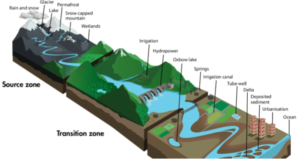
Inset: River’s Journey from Mountains to Sea Shores
To understand why rivers follow particular courses during this journey, we need to examine how they move through landscapes by carving paths along the route of least resistance. While some rivers maintain relatively direct paths with minimal deviation, most follow meandering courses that naturally shift and change over time, constantly reshaping the terrain as they wind through valleys, plains, and deltas before reaching their final destination.

Inset: Meandering of a River. Additional resources – Practical Engineer, Minute Earth
This is further evident when we view rivers using LiDar images, which shows the true extent of a river’s floodplain (refer the image below, in the first example of the Ruamahanga the river is in black, floodplain in green and purple represents local mountains)
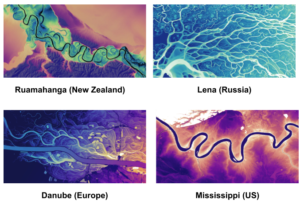
(Source)
Rivers and Startups Parallels
Much like how rivers begin in the source zone as small mountain streams fed by glacial melt and snow, gradually gaining power as tributaries converge during their journey toward the ocean, startups often begin with simple ideas that evolve into transformative businesses as they gather momentum and resources over time.
At their core, both startups and rivers must adapt or stagnate. When their current path becomes unviable
– whether rivers face rocks and rough terrain or
– startups encounter external factors like market shifts and regulatory challenges
both require course correction or risk losing momentum. It is thus important to recognize what cannot be changed and work around the obstacles, gradually forging new paths that can completely transform the landscape (similar to category creators).
Below are notable examples that illustrate how adaptability determines a company’s trajectory and how even established industry leaders can face decline if they fail to pivot when market conditions shift
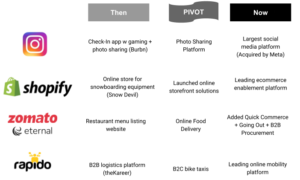
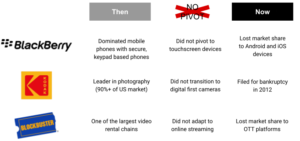
Similarly, at Auxano, our portfolio companies also exemplify adaptability, having transitioned to new verticals/offerings
- Wiom – started as a Wi-Fi and data analytics platform => discovery & intelligence platform for retailers => transitioned to partner under PM Wani Scheme => now focusing on providing primary and secondary internet access
- Primebook – started as a cloud-based operating system (PrimeOS) => Mobile Device Management (MDM) solutions => on demand learning solutions => now launched its own hardware device (Primebook laptop, Gen2 version to be launched soon).
- Private Circle – started as a database for unlisted companies => launched Research (added data intelligence + analytical capabilities) => launched Marketplace for end-to-end investment sourcing and facilitation.
Takeaway
The most enduring companies understand that their original vision may need to evolve as market conditions shift – whether that means pivoting to entirely new verticals, discontinuing underperforming segments, or recognizing emerging opportunities before competitors do.
For founders, this means embracing the river’s lesson: maintain focus on the ultimate destination while remaining flexible enough to carve new paths when obstacles arise.
Author
Aditya Golani

